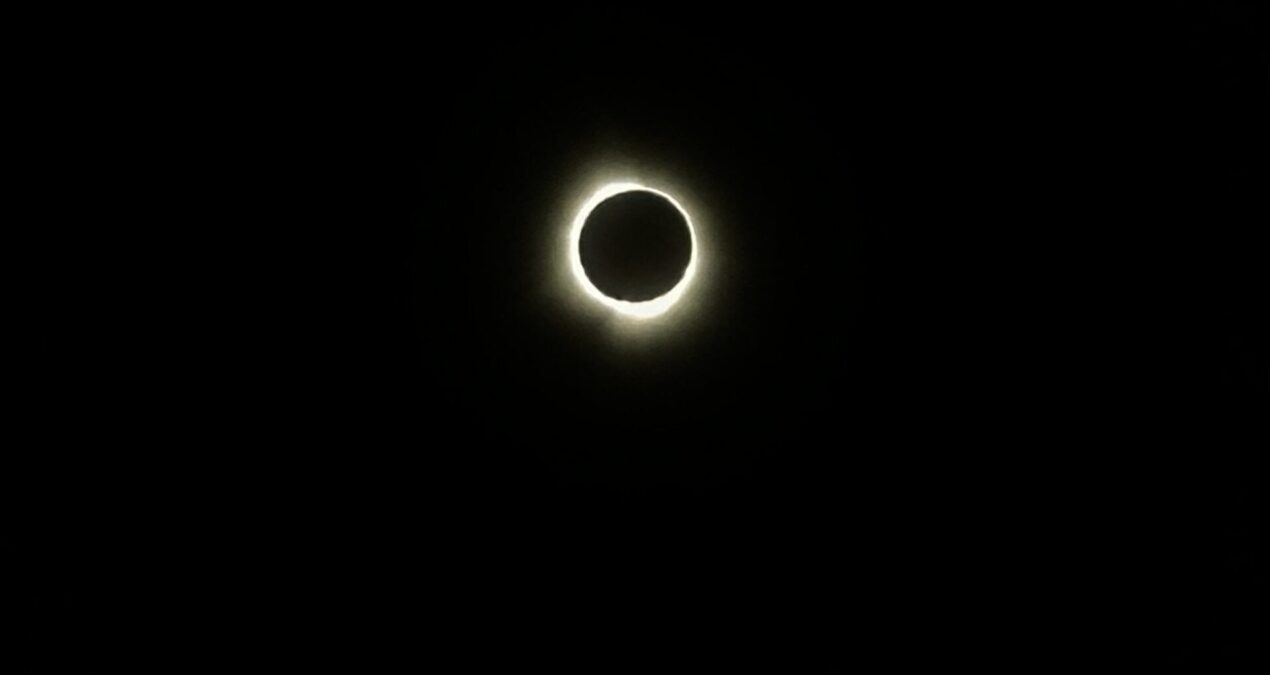Arianna Griffiths & Donald Keough, Editor-in-Chief and News Editor
On April 8, 2024, for the first time in 218 years, Ohio was in the direct path of a total solar eclipse. The last total eclipse in Ohio was in 1806, three years after Ohio was established as a state. Denison experienced a 99.5% partial eclipse, and many professors canceled classes to allow students to experience it.
In the weeks leading up to the event, the Physics & Astronomy departments provided complimentary solar eclipse glasses for every member of the Denison community, complete with the school’s logo and the date of the eclipse printed on either side. They offered them at the library circulation desk in the weeks leading up to this once in a lifetime event for Ohio.
The Society of Physics Students organization, in collaboration with the physics and astronomy departments, also brought roughly 50 students to Fairfield, Ohio for the eclipse.
“I’m so happy that we were able to sponsor this [eclipse] and help bring students to see it.” said Rae Furge ‘24, the president of the Society for Physics Students at Denison.
When asked about the event, she described it as “fantastic and incredible” adding, “This was probably one of the top 10 moments in my life.”
While in Fairfield, students enjoyed shopping at vendors and eating at different food trucks. In the moments leading up to the eclipse, students cheered and celebrated as the world turned dark around them.
“I’m very happy, very happy with how the event turned out,” Furge said. “I’m grateful that we were able to sponsor this event and that we were given the opportunity to bring students to see it.”
Dr. Steven Olmschenk, Chair of the Physics and Astronomy program, has been planning for the eclipse for months.
“A total eclipse occurs somewhere on the Earth’s surface approximately once every 1.5 years, but is a rare event for any given location,” Olmschenk said. “The last time a total solar eclipse passed through Ohio was 1806, and the next time will be 2099.”
Due to the nature of this rare astronomical event, Olmschenk and the departments spent the weeks leading up to the eclipse hosting planetarium shows and an observatory open house to educate the community, as well as coordinating a trip to bring students to the totality zone.
Olmschenk said, “We’ve had this on our radar ever since the last eclipse that passed through the US in 2017, but the planning began in earnest around the beginning of this academic year.”
Additionally, Student Life hosted a viewing party on Reese-Shackelford Common, where they gave out 200 eclipse t-shirts to students.
In the days preceding the event, Alex Miller, the vice president of student life said that he and his colleagues were “excited to host this historic moment on campus,” adding, “we hope that the viewing party is a chance to gather as a community to enjoy this special occasion.”
Echo Kattmann ‘26 stayed on campus for the eclipse. She said, “It was a once in a lifetime experience that was special to witness with my friends.”
Other students traveled with friends to view the eclipse in the path of totality. Megan Conway ‘26 said, “I’m from Cleveland so it was so awesome to experience full totality from my own backyard.”
The next time a total eclipse will be visible from the continental US will be 2044, making this truly a “spectacular event” as Dr. Olmschenk described it.
“It’s been a long time coming,” Olmschenk said.
Photo: Alex Nie / The Denisonian

